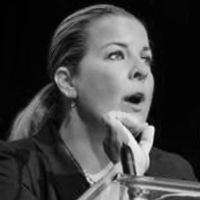Question
Clarify "disinfect" versus "clean." What products clean/disinfect equipment, and what products sterilize equipment?
Answer
Cleaning refers to procedures in which gross contamination is removed from surfaces or objects without killing germs (Bankaitis & Kemp, 2003;Bankaitis & Kemp, 2005;Bankaitis, Kemp, Krival & Bandaranayake, 2005). It does not necessarily involve any level of germ killing but it must occur prior to disinfection or sterilization as the effectiveness of these procedures may be compromised without it.
Disinfection refers to a process in which germs are killed (Bankaitis & Kemp, 2003;Bankaitis & Kemp, 2005;Bankaitis, Kemp, Krival & Bandaranayake, 2005). Levels of disinfection vary according to how many and what specific germs are killed. Household disinfectants kill a limited number of germs commonly found in the household. In contrast, hospital-grade disinfectants are much stronger and kill a larger number and variety of germs.
Finally, sterilization involves killing 100% of vegetative microorganisms, including associated endospores (Bankaitis & Kemp, 2003;Bankaitis & Kemp, 2005;Bankaitis, Kemp, Krival & Bandaranayake, 2005). Whereas disinfection may kill some germs, sterilization, by definition, kills all germs and associated endospores each and every time. There are several different ways in which items may be sterilized including heat pressurization via an autoclave, gas sterilization, or cold sterilization. Most audiologists rely on cold sterilization which involves submerging cleaned items into a chemical solution and allowing the items to soak for a specified amount of time. There are only two EPA-approved liquid chemicals that may be used for sterilization. Glutaraldehyde solutions in concentrations of 2% or higher (i.e. brand name products such as Wavicide, Cidex) or 7.5% or higher levels of hydrogen peroxide (H202) (i.e. brand name products such as Sporox) are the only chemicals approved by the EPA for cold sterilization.
As outlined by the Universal (Standard) Precautions issued by the CDC, touch and splash surfaces must be cleaned and then disinfected. A touch surface is an area that may potentially come in direct or indirect contact with hands including countertops, work benches, arm rests, tables, etc. A splash surface refers to an area that may be hit with blood, bodily fluids, or other secretions. In contrast, critical instruments must be cleaned and then sterilized. Critical instrument refers to any instrument or object that is either introduced into the bloodstream (e.g. needles), non-invasive instruments or objects that come in contact with mucous membranes or bodily fluids (e.g. blood, saliva, mucous drainage, pus), and/or any instrument or object that can potentially penetrate the skin from use or misuse. Within the context of the audiology clinic, any reusable item that does not make contact with blood, mucous membranes, or bodily fluids, and any reusable item that is not used in a manner where it may potentially penetrate the skin from use or misuse should be cleaned and then disinfected. All critical instruments and objects should be cleaned and sterilized prior to reuse.
References:
- Bankaitis, A.U. and Kemp, R.J. (2003). Infection Control in the Hearing Aid Clinic. Boulder, CO: Auban.
- Bankaitis, A.U. & Kemp, R. J. (2005). Infection Control in the Audiology Clinic (2nd edition). St. Louis, MO: Auban, Inc.
- Bankaitis, A.U., Kemp, R.J., Krival, K., and Bandaranayake, D.W. (2005). Infection control for Speech-Language Pathology. St. Louis, MO: Auban, Inc.
A.U. Bankaitis is Vice President of Oaktree Products based in St. Louis, MO. She is an audiologist with a niche expertise in the area of infection control. Dr. Bankaitis has presented several courses on AudiologyOnline, including two in the area of Infection Control, Infection Control - HIV, the Immune System, and Developing Written Protocols (course #13154) and Infection Control - Putting the Pedal to the Sterilized Metal (course #12758).

